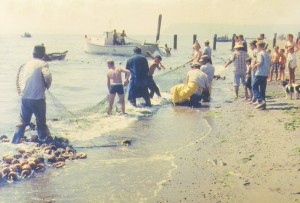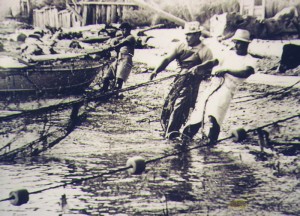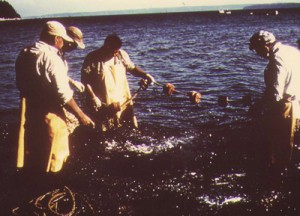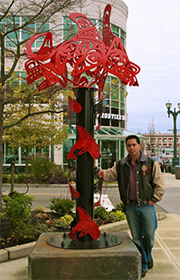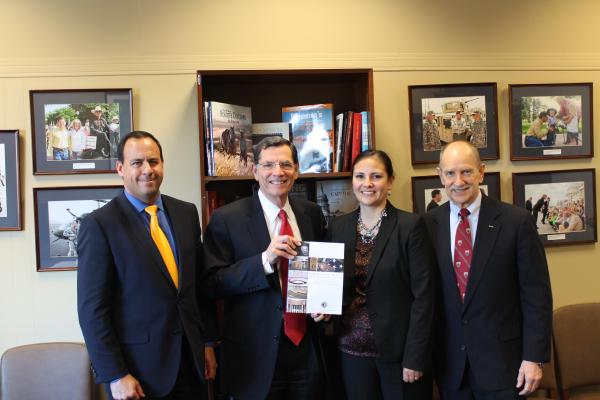By JOHN STARK
THE BELLINGHAM HERALD January 23, 2014
DEMING – Two members of the Nooksack Indian Tribe’s eight-member governing council have been replaced by Chairman Bob Kelly and the other council members who support the effort to strip 306 Nooksacks of tribal membership.
But Seattle attorney Gabriel Galanda filed a new lawsuit in tribal court on Tuesday, Jan. 21, to challenge the legality of the council’s action, taken Monday, Jan. 20.
In another legal development, the Nooksack Court of Appeals handed the challenged Nooksack tribe members a significant victory on Wednesday, Jan. 22. The court ordered the suspension of the tribal disenrollment process while the court continues its review of legal issues Galanda has raised on behalf of those facing loss of tribal membership.
Last week, after the same appeals court lifted an earlier stay of the disenrollment process, tribal police had begun serving disenrollment notices to affected tribe members, notifying them of the date and time for their telephonic hearing before tribal council.
In an email message, Chairman Kelly said Michelle Roberts and Rudy St. Germain were ousted from the council under a provision of the tribal constitution that allows removal of council members who miss more than three consecutive meetings without an excuse. The council then named Roy Bailey to replace St. Germain and David Williams to replace Roberts.
Roberts and St. Germain are among the 306 Nooksacks facing disenrollment.
In a sworn statement filed in connection with the latest lawsuit, Michelle Roberts accuses Kelly of calling three council meetings with little advance notice on Jan. 17, 18 and 20 – the Martin Luther King Day holiday. Roberts said she believed that Kelly had called the meetings so she and St. Germain could be served with disenrollment papers. Instead, she and St. Germain contacted Kelly via email to let him know that they would attend the meetings by teleconference, as council members had done on some past occasions. But when she called the chairman’s office to participate in the first two meetings, Roberts said there was no answer.
For the Martin Luther King Day meeting, Roberts said she phoned in again, and “the person who answered the phone said the council was already in session and that she was instructed to not patch me in to the meeting.”
Later that day, Roberts said she discovered that her tribal cellphone and email account had been shut down.
Roberts said she believes Kelly and his supporters on the council want to get her and St. Germain out of office so that they cannot participate when other challenged Nooksacks get their opportunity to argue their case for tribal membership before the council.
The current legal battle is rooted in longstanding resentment against three families whose members were admitted to tribal membership in the 1980s. The members of those families are descendants of Annie George, who died in 1949. Members of those three families – the Rabangs, Rapadas and Narte-Gladstones – have introduced evidence that Annie George was Nooksack, but Kelly and his backers say George’s name does not appear on a list of those who got original allotments of tribal land and or on a 1942 tribal census.
In his most recent court filings on behalf of the challenged Nooksacks, Galanda has argued that regardless of George’s status, members of the three families can meet one of the other membership criteria spelled out in the tribal constitution: They are descended from other people who were enrolled tribal members, and they possess one-fourth Indian blood.
The tribal courts have yet to address that argument directly, and it remains to be seen if those courts will take action to stop the tribal council from disenrolling members of the three families.
Four positions on the tribal council – including Kelly’s – are up for election this year, with a primary scheduled for Feb. 15 and a general runoff election on March 15.
The 2,000-member tribe operates two Whatcom County casinos. The February 2013 edition of the official tribal newsletter, Snee-Nee-Chum, reported that the tribe’s 2013 expenditures would add up to about $39 million, with about 24 percent of the available revenue coming from the casinos and smaller tribal enterprises.
While the tribe’s annual budget might seem like a lot compared to what comparable-sized non-Indian cities spend per year, it includes significant amounts for tribally run health care and social services that are supported with federal money. Those are among the benefits the families facing ouster could lose.
Reach John Stark at 360-715-2274 or john.stark@bellinghamherald.com . Read the Politics Blog at bellinghamherald.com/politics-blog or get updates on Twitter at @bhampolitics.











